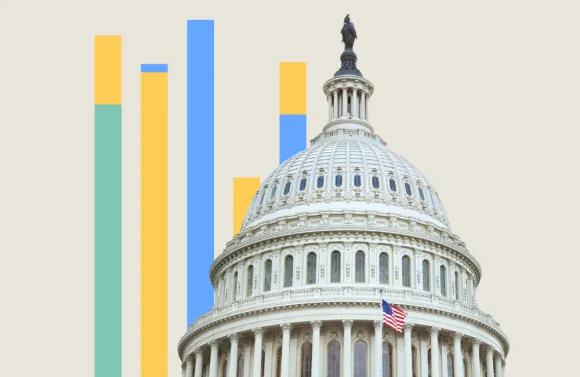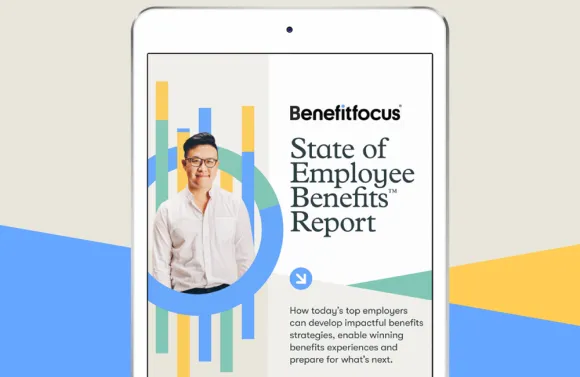
Today’s workforce is more diverse than ever before – a factor that influences culture and employee benefits and almost everything in between. In fact, Aon’s DEI: A New Approach to Employee Benefits whitepaper states that ““Employers must redefine their benefits offer from the ground up. They must ensure it is free of bias and genuinely promotes employee health and security in an inclusive and equitable manner.” While this work dovetails with the post-pandemic imperative to meet employees’ needs and expectations across the employee value proposition, the employee benefits arena continues to evolve as employers prioritize understanding their workforce and helping them optimize their benefits mix.
We explore this topic at length in our 2024 State of Employee BenefitsTM Report. By revealing several generational trends across health care and voluntary benefit plan enrollment – and noting the reality that every employee is an individual with their own unique benefits needs – the report supports the notion that today’s employers want to simplify and personalize their people’s benefits experiences across health and financial wellness.
Supporting a Diverse Workforce with Various Benefits Needs
Employers know that a competitive benefits program can help them attract and retain top talent by meeting workers’ expectations for holistic and affordable offerings that support a range of life stages, needs and lifestyles. To appreciate the magnitude of this task, consider the wide variety of demographic groups that a single employee might fall into – groups that are not mutually exclusive:
- 5 generations
- Frontline workers
- Remote workers
- Working parents
- Caregivers
- Neurodivergent workers
- Workers with disabilities
- Racial, ethnic and cultural minority workers
- Women
- Veterans
- Executives
- Hourly workers
- Salaried workers
- ...and more!
To say the least, each employee is unique, and people may want to “see themselves” reflected in the benefits offered by their employer. How can employers achieve this?
5 Must-Haves for Meeting Your Workforce’s Benefits Needs
1. An expansive understanding of your employees and their benefits expectations
Who are your employees? What matters to them? What brings them together – and what makes them unique? What types of benefits are they looking for – and expecting to see offered by an employer?
There are many questions you can ask and answer along these lines, but they all come down to you having workforce demographics in hand and feedback mechanisms in place to help you make strategic benefits decisions. How can you meet their needs if you don’t know them in the first place? Like every successful marketer knows, “knowing your audience” makes it possible to deliver for them, from building awareness and interest through driving benefits engagement.
Learn more in our How to Get to Know Your People Better Playbook!
2. Quantitative insights into your employees’ benefits behaviors
But before you can develop and execute on a winning benefits program, having a grip on key employee benefits data can help inform your decisions. This goes well beyond employee benefits sentiment data – like that which you uncover through annual benefits or pulse surveys – but rather the data that’s collected by your benefits administration solution.
As detailed in Seven Smart Ways to Harness the Power of Your Benefits Claims Data, you can leverage data – demographic, enrollment, eligibility, claims, engagement and more – as a strategic accelerator. Your employees’ needs and preferences may be varied, requiring your benefits team to work with a number of benefits and technology vendors to manage (and communicate!) a benefits menu that resonates with and engages everyone. Data is required to measure ROI and determine whether or not your benefits programs are meeting expectations, reaching the “right” employees and engaging them when they need to use them.
Get more insights in our Assess for Success Playbook.
3. A choice of health plan options
Employers and employees agree that health care benefits are the number one priority in a benefits package – it’s the cornerstone around which a holistic program is built. According to a Forbes Advisor survey, 67 percent of employees and 68 percent of employers believe employer-covered health care to be the most important benefit, ranking in the top spot ahead of life insurance and pension and retirement plans.
And since there’s no such thing as a one-size-fits-all solution – there are simply too many variables. Some people need the level of coverage and/or cost-sharing breakdown provided by a PPO plan; others may find better coverage and financial “fit” with an HDHP that’s coupled with a Health Savings Account. That’s why for plan year 2024, according to the 2024 State of Employee Benefits Report, 84 percent of employers offered their employees a choice of traditional and high deductible (HDHP) health plans.
4. Voluntary benefit options
Whether they enroll in a traditional or HDHP, employees can take advantage of supplemental benefits to help them optimize overall benefits spend and minimize financial risk. When employees have access to benefit options that they can personalize to make the most of each benefits dollar, there’s potential to improve health and financial outcomes and employee satisfaction with their benefits plan.
In fact, over three-quarters (77 percent) of employees surveyed by Buck in 2023 said voluntary benefits are an essential part of a comprehensive benefits package, up from 68 percent in 2022. And 2024 State of Employee Benefits Report data revealed that in addition to core major medical, employees across all generations enrolled in accident, critical illness and hospital indemnity benefits. (Critical Illness may be referred to as Specified Disease in some states.)
Helping employees make optimal benefits choices is a logical next step.
5. A personalized, guided benefits experience
A streamlined benefits enrollment process can help define a successful benefits experience. As explained in our 2024-2025 Buyers Guide, employees today need a hyper-personalized, hyper-connected experience that directs them to their next best action – and that minimizes the potential for “bad” decisions and removes barriers to making the most out of their benefits for maximum personal impact.
A user-friendly enrollment experience allows employees to consider their core and supplemental health care and financial wellness offerings side-by-side. This holistic approach makes it easier for them to see how their benefits can work together to meet their unique needs.
But since benefits engagement doesn’t stop with enrollment, communicating regularly with employees and leveraging a digital benefits hub to enable access and connect them to the quality care they need will help maximize their benefits and keep their plans and programs top-of-mind.
Uncover more insights in our 2024 State of Employee Benefits Report. Download your copy!


